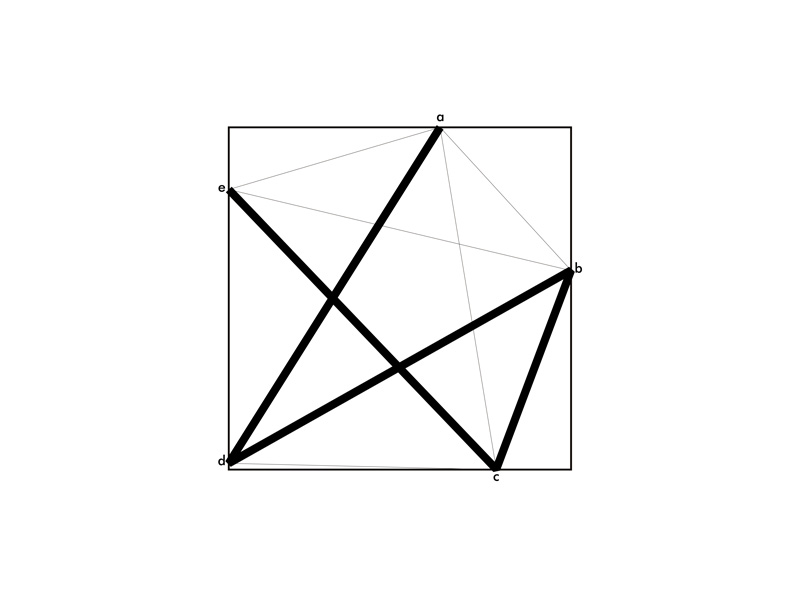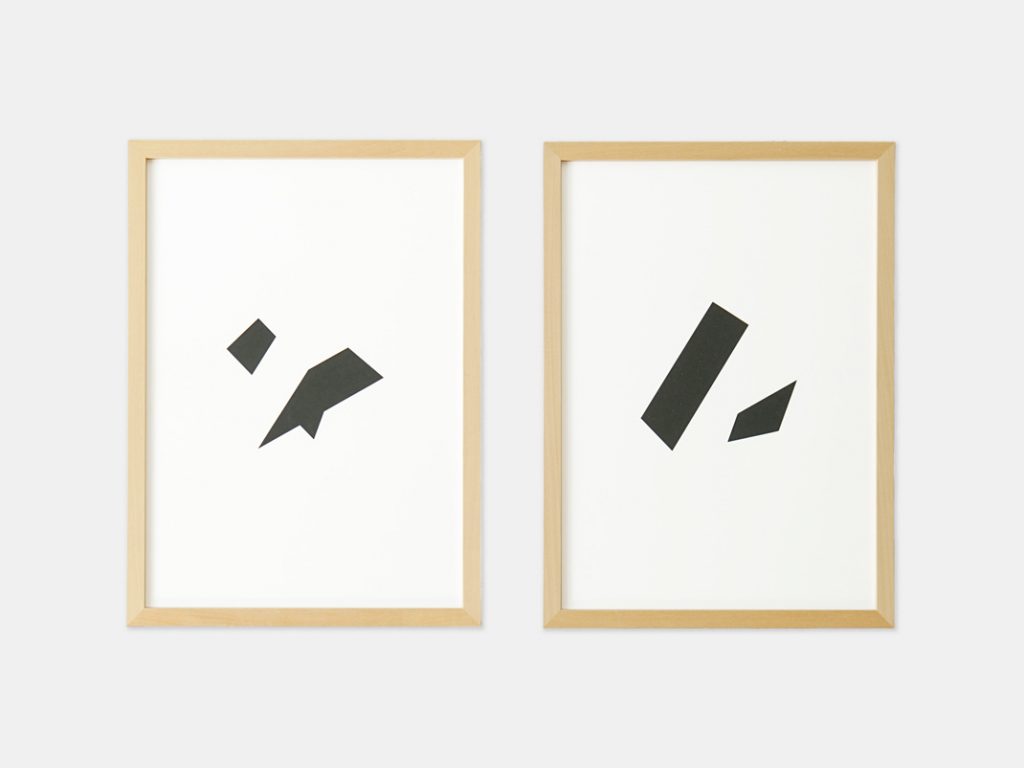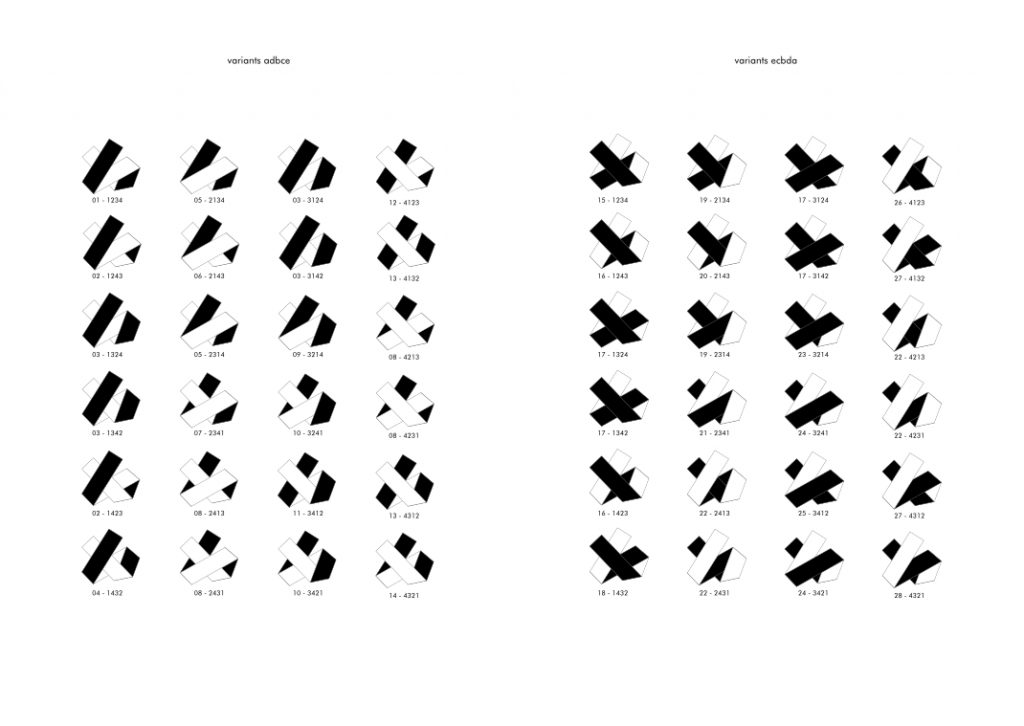Thomas Rauscher
foldings 4
paper cutouts
28 sheets, each 29,7 x 42 cm
2024
edition of 10 + 1 AP
For this series of foldings, I took the initial square form from Folding 2 and connected all the contour points with a continuous line. The sequence follows the order ADBCE and its reverse, ECBDA. When this line is widened and considered as a strip, each change in direction can be interpreted as a fold. Such a fold means that the front and back sides of the strip alternate in visibility. Furthermore, the individual parts of the strip can be positioned on different levels relative to each other, so that depending on the arrangement, parts of the strip are covered or visible. This idea was the decisive factor for me to develop this work out of the plane, similar to Folding 1. The front side of the strip is identical to the paper on which it lies; the visible back side is created by cutouts in the sheet of paper, revealing the background on which the sheet is positioned.
In a strip with 4 folds, the front and back sides alternate twice from the starting point to the endpoint. There are 14 different ways to arrange the strip sections on top of each other. Since the direction of the sequence is also important here, the reverse sequence must also be considered, and the 14 additional variants must also be taken into account.



